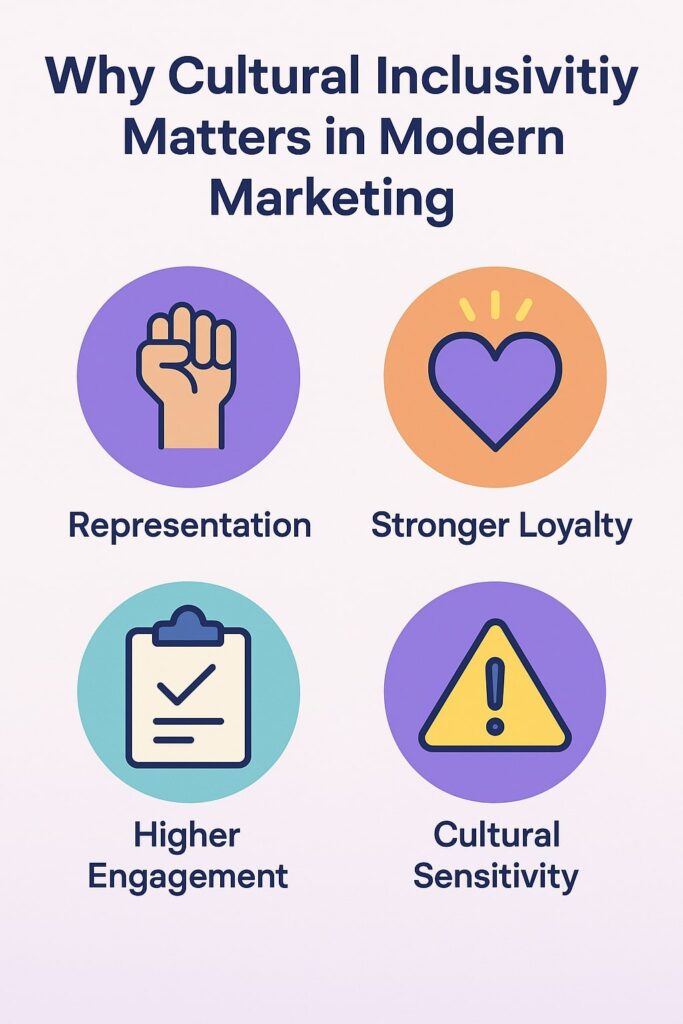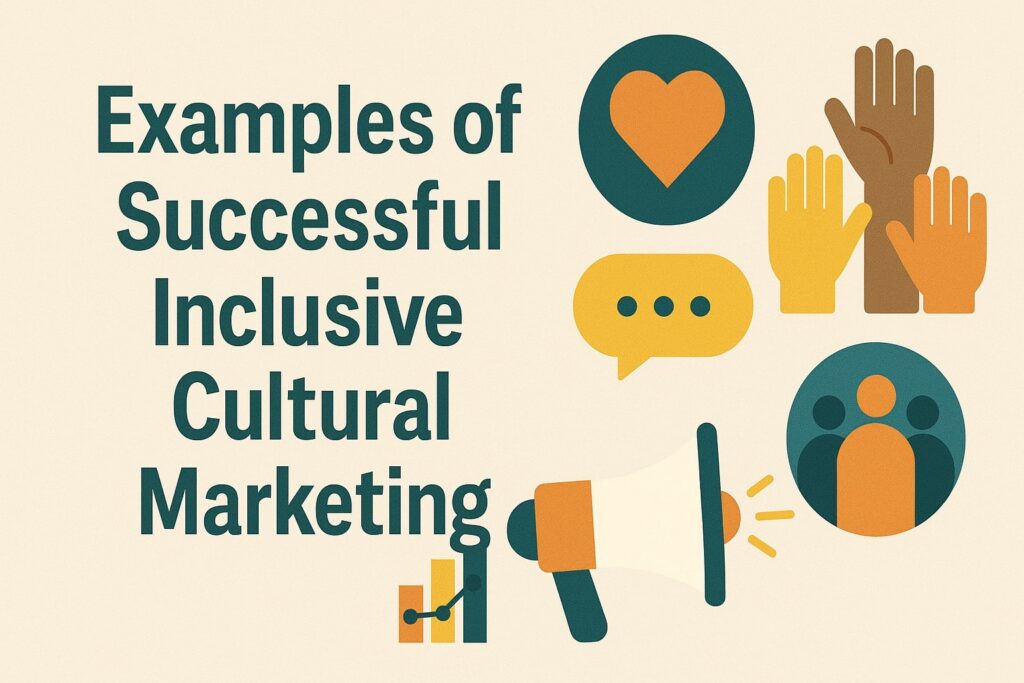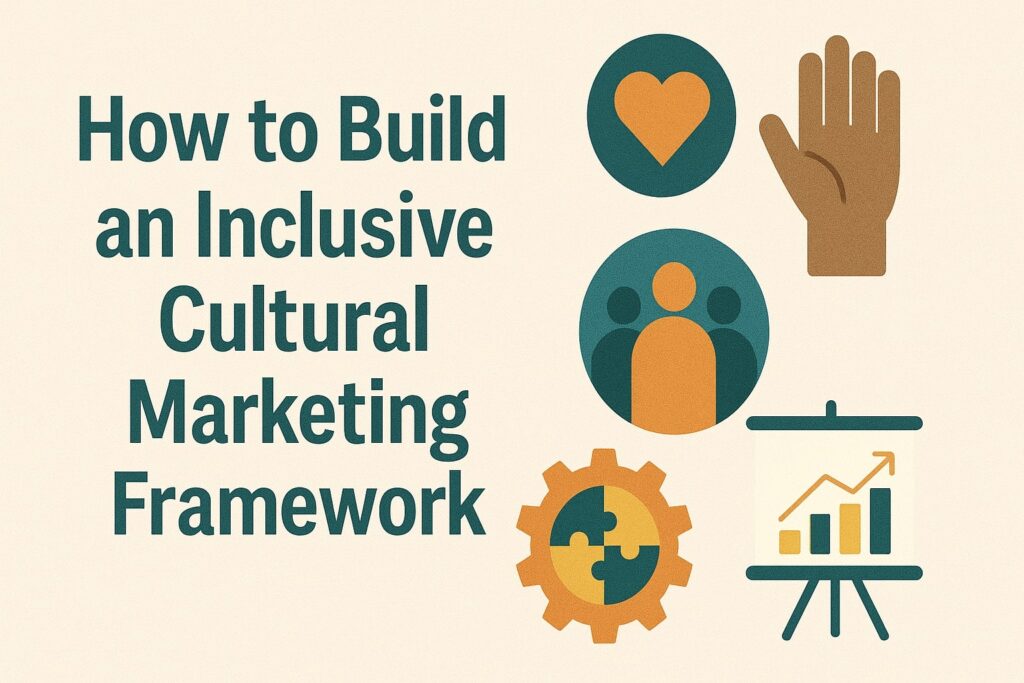Effective Cultural Marketing Strategies for Inclusivity

Cultural marketing is becoming more important than ever. Today, people want brands that understand them, respect them, and include them. They want to see themselves in ads, on websites, in videos, and in social media posts. When a brand shows real care for different cultures, people feel noticed and valued.
This article explains what cultural marketing is, why inclusivity matters, and what strategies truly work. It is written in simple wording so anyone—even a 7th-grade student—can understand it easily.
Let’s begin.
Understanding the Cultural Marketing
Cultural marketing means creating messages, images, and campaigns that include people from different backgrounds, traditions, and identities. This includes differences in race, religion, language, age, gender, abilities, and lifestyles.
Inclusivity means making sure everyone feels welcome and respected. When brands ignore inclusivity, people feel left out. But when brands get it right, people trust them more and stay loyal longer.
In today’s world, inclusivity is not just “a nice thing to do”—it is a major part of a brand’s success.
Why Cultural Inclusivity Matters in Modern Marketing

Inclusivity has become a requirement. People expect it. They judge brands based on how fair and respectful they are. Let’s look at why it matters so much.
Changing Customer Expectations
Customers today want to see themselves represented. They want campaigns that reflect real life, not a perfect or limited picture. When brands include different cultures, people feel seen and understood.
A simple example:
A skincare brand that shows only one skin tone in its ads will not connect with everybody. But a brand that shows many skin tones sends a message of respect.
Inclusivity as a Brand Strength
Brands that focus on inclusivity often get:
- higher engagement
- stronger customer loyalty
- more positive word of mouth
When customers see a brand supporting diversity, they feel safer choosing it.
Avoiding Cultural Blind Spots
Cultural blind spots happen when brands don’t understand a culture well and accidentally offend people. These mistakes spread fast online. An insensitive ad can damage a brand’s name for years.
This is why brands must be careful, do research, and think deeply before launching campaigns.
Core Principles of Inclusive Cultural Marketing
These principles help brands create marketing that feels honest, respectful, and real.
Representation That Feels Real
Representation is not about adding one person from a certain culture just to “look diverse.” That feels fake and people notice it. Real representation means:
- showing people naturally
- including different body types
- different ages
- different abilities
- different skin tones
- different lifestyles
People want to see real life—not a perfect staged version.
Language That Respects Everyone
Language plays a big role in inclusivity. Brands should use simple, friendly, and respectful wording. They should avoid:
- offensive terms
- stereotypes
- confusing slang
- words that exclude certain groups
Sometimes brands need to translate or localize their messages for different languages. This shows effort and respect.
Accessibility for All Audiences
Accessibility means making content easy for everyone to use, including people with disabilities. This includes:
- adding captions to videos
- readable fonts
- alt text for images
- simple design layouts
- good color contrast
When everyone can access the content, inclusivity becomes truly complete.
Key Cultural Marketing Strategies That Actually Work

Now let’s explore the strategies that help brands reach diverse audiences in a respectful and meaningful way.
Deep Cultural Research Before Campaigns
Research is the first step toward successful cultural marketing. Brands should learn:
- traditions
- values
- important holidays
- cultural meanings of colors or symbols
- do’s and don’ts
- common cultural beliefs
Example Table: Cultural Understanding Basics
| Cultural Element | Why It Matters | Example |
| Traditions | Helps brands respect important customs | Ramadan, Lunar New Year |
| Language | Avoids misunderstandings | Respectful translations |
| Colors | Some colors have cultural meanings | White = mourning in some cultures |
| Holidays | Shows respect and awareness | Indigenous Peoples Day |
When brands skip research, mistakes happen. Proper research prevents misunderstandings and shows true care.
Working With Diverse Creators and Communities
Influencers and creators who belong to the culture understand it better than anyone. Their voices feel real because they live that culture every day.
Brands should partner with:
- local creators
- minority creators
- creators with lived experiences
- community leaders
When creators speak for themselves, messages feel more honest and relatable.
Celebrating Cultural Events Authentically
Brands should celebrate cultural events in a respectful and meaningful way—not just for attention.
For example:
- Celebrating Black History Month with real stories
- Sharing Indigenous voices with proper credit
- Highlighting Ramadan, Diwali, or Lunar New Year thoughtfully
Authenticity means the brand truly supports the culture, not just uses it for marketing.
Localizing Content for Different Regions
People in different places have different cultures. A campaign that works in one country may not work in another.
Localization means:
- changing images
- adjusting tone
- translating languages correctly
- showing local people and places
- tailoring products to local needs
This makes the brand feel more connected to each community.
Building Internal Diversity in Marketing Teams
It’s easier to create inclusive campaigns when the team itself is diverse. A diverse team brings:
- different viewpoints
- cultural knowledge
- new ideas
- better problem solving
This leads to smarter and more respectful campaigns.
Inclusivity Across All Touchpoints
Inclusivity should appear everywhere—not just in ads. This includes:
- website content
- customer support
- packaging
- product design
- social media posts
- store experience
When everything feels inclusive, customers trust the brand more.
Examples of Successful Inclusive Cultural Marketing

Global Brand Case Studies
Here are a few examples of well-known brands that used inclusive cultural marketing in the right way. These brands show how powerful and positive inclusivity can be when it is done honestly.
Example 1: Nike
Nike is known for showing athletes from many different races, cultures, and backgrounds. They also include athletes with disabilities and athletes from different identities, showing that sports are for everyone.
Nike does not use diversity as a decoration—they make it the heart of their message. Their ads focus on real stories, real struggles, and real victories.
This makes people feel seen and respected, and it inspires young people around the world. Nike shows that anyone can be an athlete, no matter who they are.
Example 2: Dove
Dove became famous for using real people instead of models. Their “Real Beauty” campaign showed women of different ages, skin tones, sizes, and shapes.
This made many people feel confident because they finally saw bodies that looked like theirs in ads. Dove’s message was simple: everyone is beautiful. This honesty helped the brand connect with millions of people.
Dove also started programs that teach young girls about confidence and self-love, showing that inclusivity is part of their values—not just their marketing.
Example 3: Google
Google includes many cultures and communities through the stories they highlight. Their videos often show how people from different backgrounds use technology in meaningful ways—like helping families stay connected or supporting local traditions.
Google also focuses on accessibility by adding tools such as automatic captions, translation services, and color-friendly interfaces.
This helps people with different needs use their products easily. By doing this, Google shows that technology should include everyone, not just a few people.
Lessons for Brands
From these case studies, brands learn that:
- real stories matter
- diversity must be natural, not forced
- honesty builds trust
- long-term commitment wins over quick campaigns
Common Mistakes to Avoid
Inclusivity can go wrong when brands are careless. Here are the main mistakes to watch out for.
Tokenism and Stereotyping
Tokenism means adding someone from a culture just to “look diverse.” People notice this quickly. Stereotyping means showing only one version of a culture in a negative or simplified way. Both hurt trust.
Cultural Appropriation
This happens when brands use cultural elements—like clothing, symbols, or traditions—without respect or understanding. It makes the culture feel misused.
Ignoring Cultural Feedback
Communities often speak up when something feels wrong. Brands that listen can improve. Brands that ignore feedback risk their reputation.
How to Build an Inclusive Cultural Marketing Framework

A strong framework helps brands stay consistent. Here is a simple system that works for most brands:
1. Research: Learn about cultures, traditions, holidays, values, and sensitivities.
2. Planning: Create a strategy that honors the culture and includes diverse perspectives.
3. Community Input: Ask people from the culture for advice and feedback before launching anything.
4. Review: Double-check language, images, colors, and symbols to avoid mistakes.
5. Launch: Share the campaign with confidence and transparency.
6. Feedback Loop: After launching, collect feedback and learn from it for future campaigns.
Tools to Check Cultural Accuracy
Here are some tools and methods brands can use:
- Cultural advisors
- Focus groups
- Surveys
- Local community leaders
- Diverse team reviews
These tools help catch mistakes early.
The Future of Inclusive Cultural Marketing
Inclusivity will continue to grow in the next few years. Here’s what the future looks like.
Rise of Hyper-Personalized Cultural Messaging
Brands will use technology to create tailored content for specific groups. This helps messages feel more personal and respectful.
Growing Importance of Local Creators
Local influencers will become more powerful because they understand their community better than global celebrities. Their messages feel real and trustworthy.
Brands Working With, Not Just For, Communities
Brands will involve communities in decisions. This includes co-creating products, campaigns, and events. When communities help shape the marketing, inclusivity becomes stronger and more real.
FAQs
1. What is cultural marketing?
Cultural marketing means creating messages and ads that include people from different backgrounds. It focuses on understanding their traditions, languages, and values. This helps the brand connect with more people in a respectful way.
2. Why is inclusivity important in marketing?
Inclusivity is important because people want to feel seen and valued. When brands include many cultures, customers feel respected and are more likely to trust and support the brand. It also helps brands reach a wider audience.
3. How can a brand make its marketing more inclusive?
A brand can be more inclusive by using diverse people in photos and videos, using simple and respectful language, and learning about different cultures before making campaigns. Asking communities for feedback also helps avoid mistakes.
4. What is the biggest mistake brands make with cultural marketing?
The biggest mistake is using stereotypes or “token” representation just to look diverse. This feels fake and can offend people. Brands should always try to show real stories, not quick or shallow images.
5. Why is it important to work with diverse creators?
Working with diverse creators is important because they understand their culture better than the brand. They know what feels real and what feels wrong. Their voice makes the message honest and relatable.
6. What are the benefits of inclusive marketing for brands?
Inclusive marketing helps brands build trust, earn loyal customers, and avoid cultural mistakes. It also helps them reach new groups of people who may not have felt included before. In the long run, inclusive brands grow faster.
Conclusion
Inclusive cultural marketing is really about treating people with respect. When brands take time to learn about different cultures and show them in a true and kind way, people feel understood. This makes customers trust the brand more and feel good about supporting it.
The big lesson from this whole article is that good marketing is not just about selling something. It is about making everyone feel welcome, no matter who they are or where they come from. When brands listen to communities, avoid stereotypes, and include real stories, they build stronger and happier relationships.
As the world becomes more diverse, the brands that include everyone will grow faster and stay trusted for a long time. Inclusivity is not a trend—it is the right way to communicate with people.






